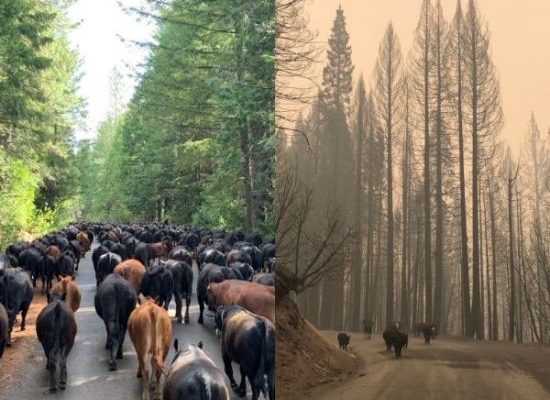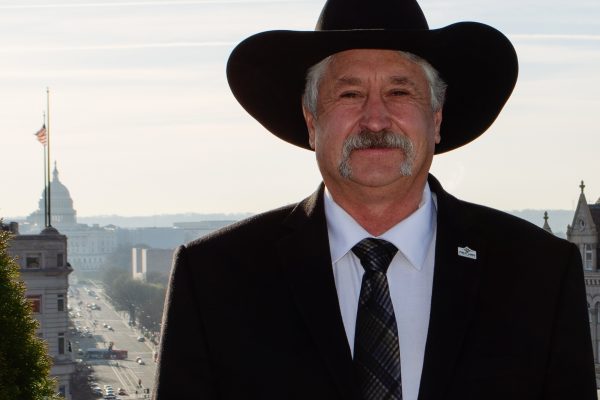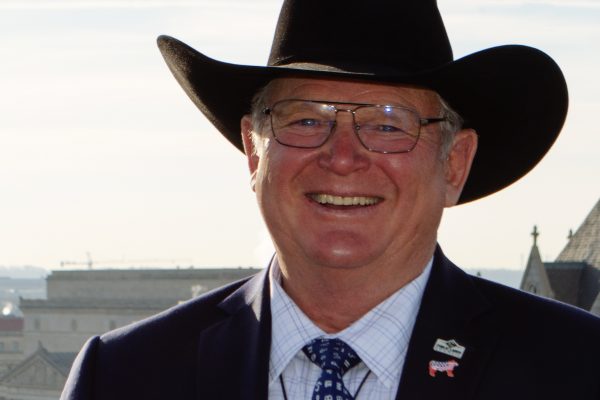By Theodora Dowling
Special to Western Livestock Journal, December 22, 2014
Congress sometimes channels Picasso in order to get laws passed. Unexpected parts crop up in unexpected places. There’s an element of surprise, for example, when a public land management package gets laid onto a national defense spending bill before the paint dries. Like it or not, this display of creativity is a commonplace way for lawmakers to get bills through Congress: Tack them onto “mustpass” measures like the National Defense Authorization Act.
For those willing to accept this approach, there are upsides. For example, when Public Lands Council (PLC) became aware that a public lands package was being rolled in with the defense bill, PLC decided to use the occasion to its advantage. PLC supported the inclusion of grazing language that PLC believes will improve the stability of the federal land grazing industry for decades to come.
Federal land grazing expert, Dustin Van Liew, explained the significance of the new grazing language that’s now law. Van Liew, who has been known to tell ranchers he “lives in Washington so you don’t have to,” is the Executive Director of PLC and the Executive Director of Federal Lands for National Cattlemen’s Beef Association. He told us the new grazing provisions were drawn from PLC’s priority legislation, the Grazing Improvement Act.
That bill, championed by Senator John Barrasso (R- WY) and Representative Ral Labrador (R-ID), had made considerable progress over the past few years, having passed the House several times and advanced in the Senate—but never having come to a final vote in that chamber. Van Liew said that witnessing the enactment of several important elements of the Grazing Improvement Act has been a major accomplishment, both personally and for industry.
The details
The most important provision that was included, he said, was one that amended the Federal Land Policy and Management Act (FLPMA) to allow federal land grazing to automatically continue in instances where the land management agency hasn’t completed all the regulatory paperwork on the permit renewal. Under current regulations, when grazing permits expire (usually after 10 years), they have to undergo National Environmental Policy Act (NEPA) review in order to be renewed. Because the NEPA process is so cumbersome—and is made worse by anti-grazing groups’ litigation—there’s an extensive NEPA review backlog, Van Liew said.
There are no reports of any permits having been cancelled due to lack of NEPA analysis—yet. Van Liew said this is likely because every year for over a decade language protecting grazing has been inserted into spending bills. Now, the defense bill has made that language permanent.
Van Liew took issue with the premise of NEPA analysis being applied to grazing permit renewals in the first place.
“We don’t believe NEPA analysis was ever meant to apply to grazing, but a few court rulings and regulations from the federal agencies have made that the case,” Van Liew said. “To clarify, this new amendment to FLPMA won’t exempt federal land grazing from NEPA review—but ranchers won’t automatically lose their permits because of a cumbersome bureaucratic process.”
Another important change to FLPMA, Van Liew said, would require NEPA analysis to be applied to the grazing allotment instead of the permit itself. That means grazing will be reviewed as part of a bigger picture of activities on a piece of federal land, and not made the sole focus of a NEPA analysis process. The NEPA process includes extensive public comment periods where “environmental” interests can have undue influence on the outcome of the land management decision, Van Liew said.
“Right now, Bureau of Land Management (BLM) does NEPA on grazing permits, not on the allotment, the way the Forest Service does it,” he said. “The current BLM process singles out grazing permits and makes them a target. This is a more common sense approach where NEPA is applied to the bigger picture—the whole allotment—and grazing is just part of that analysis.”
The new language also allows NEPA analysis to be done on more than one grazing allotment at once. The intention, Van Liew said, is to streamline the NEPA process for the agencies—which will free up more resources for monitoring and other actions that may help defend grazing.
“Combining allotments for analysis will also make it so ranchers can pool their resources and fight back if something goes wrong with the process,” Van Liew told us. “Rather than ranchers fighting alone and being picked off one-by-one, they can become a unified force and, we hope, make some gains for grazing in the NE- PA process.”
Van Liew said that additional grazing language included in the defense bill will help lessen the NEPA burden by giving the agencies the statutory authority to “categorically exclude” certain grazing decisions from full-blown NEPA analysis. The new amendments to FLPMA give the agencies the express authority to skip full NEPA analysis if the allotment is in good shape or grazing isn’t contributing to “degraded” range health. The new language allows the same shortened analysis for the trailing of livestock across federal lands. Currently, some agency offices are calling for full-blown NEPA analysis for the simple trailing of livestock to the home ranch or from one meadow to another. This, PLC argues, adds considerably to unnecessary analysis.
The vision
What are some of the “gains” industry might expect from the new grazing amendments? Van Liew said he hopes they will do more than help stabilize grazing on federal lands; he wants to see grazing make a comeback. He said there’s a growing body of research that shows that an increased grazing season and increased livestock numbers on some allotments could reduce the spread of noxious weeds, reduce the threat of wildfire, and improve wildlife habitat. But a lot of that research is being overlooked by the agencies in today’s regulatory and legal climate, where a gargantuan NEPA backlog tends to lead to hurried analyses. These analyses are sometimes devoid of sound monitoring data and science, and can include errors. This sets the agency up for litigation by radical anti-grazing groups, Van Liew said. By easing the NEPA burden, he said, Congress is giving the agencies an opening to make better grazing decisions. The agencies may choose to focus less on litigation and more on range monitoring and thorough scientific reviews.
“I’m excited at the possibility of actually increasing grazing in the West, after a half a century of decline due largely to the misinformation and misdirected efforts of self-proclaimed ‘environmental’ groups,” Van Liew said.
When asked about the wilderness, national parks, and “wild and scenic rivers” designations included in the defense bill, Van Liew expressed regret that yet more lands were being tied up in the name of “protection.”
“We all know that ‘protection’ actually means ‘handsoff, no management’ that leads to resource problems, such as overgrown forests and rangelands—and often catastrophic wildfire,” Van Liew lamented. “But in this instance, we knew that language was included in the wilderness portions to bolster protections for grazing.
In Washington, especially working with a divided Congress, no one can expect to support 100 percent of a large package of bills. This was the case with the defense package. We expect that, on balance, industry is far better off with the grazing provisions included. ” As with any piece of modern art, onlookers will fall into three categories: those who are moved to tears by it and will pay millions for it; those who find it to be worthless nonsense; and those who, after some explaining, can grow to appreciate it—or at least understand its intent. The public lands package in the National Defense Appropriations Act has had its detractors, its admirers, and those who have come to appreciate aspects of it. Since the President is expected to sign it within the month, let’s hope it brings real benefits to the livestock industry. — WLJ




